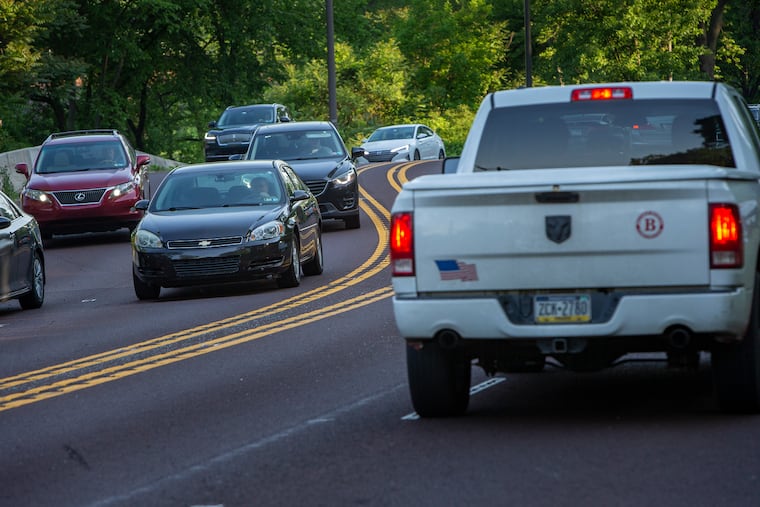Slow down, Philly. Kelly Drive has a new speed limit.
Driving around 55 mph on Kelly Drive was common. Now the curvy riverside road's speed limit is less than half that.

Slow down. Kelly Drive now has a reduced speed limit of 25 mph — down from 35 mph.
The change is intended to slow drivers and reduce accidents, according to a spokesperson for the Philadelphia Streets Department.
“A study is being done to see if excessive driving can be reduced before enforcement by police,” said the spokesperson via email.
Kelly Drive is part of Philadelphia’s High Injury Network, the 12% of streets where 80% of traffic deaths and serious injuries occur, according to data from PennDot from 2014 to 2018.
The speed limit change on the road went into effect on Dec. 2, and drivers will encounter new signs along Kelly Drive with the updated speed limit. Prior to the change, drivers along the road would on average exceed 35 mph, said the spokesperson.
A decade ago, the city tested another program on Kelly Drive in which speed sensors would activate a red light at Fountain Green if vehicles were going above the speed limit. At the time, the average speed recorded on Kelly Drive was nearly 55 mph — 20 mph over the limit.
“Speeding motorists on Kelly Drive have made that roadway unsafe,” acting streets commissioner David J. Perri said at the time.
The road has continued to experience vehicle crashes in recent years. Between the Eakins Oval traffic circle in front of the Art Museum and where Kelly Drive converts to Lincoln Drive, there were 54 crashes in 2021 and 20 in 2022, according to data from PennDot. (Data for 2023 has not been finalized yet.)
The new speed limit on Kelly Drive comes as the city has been working to improve safety on roads throughout Philadelphia. In this year’s report from Vision Zero, an initiative to improve traffic safety, Mayor Jim Kenney noted that “annual traffic fatalities of 120 or more increasingly look like a “new normal.”
Traffic deaths disproportionately affect Black people — between 2020 and 2022, half of the people who died in traffic fatalities in Philadelphia were Black, although they make up 40% of the population, according to the report.
The city’s traffic death rate is on par with Los Angeles, which is more of a car-dependent city, according to the report. There are 7.40 traffic deaths for every 100,000 residents in Philadelphia — about three times more than in New York City.
The city has also recently undertaken other measures to curb vehicle crashes and calm traffic incidents.
This week, the state legislature passed a bill to allow speed-enforcement cameras to stay permanently on Roosevelt Boulevard, and be expanded to five additional places. The cameras helped reduce crashes, fatalities, and serious injuries on Roosevelt Boulevard under a pilot program that has been running since 2020, according to a state study released last year.
PennDot and the city said in September that they planned on building traffic-calming measures at either end of a section of Lincoln Drive in West Mount Airy with speed tables, raised platforms made of material designed to minimize noise that make drivers slow down. Residents in the area have been vocal for years about reducing the speeding, aggressive driving, and crashes on and near Lincoln Drive.
Crashes with fatalities or serious injuries are down 34% in 35 areas where the city or PennDot has implemented traffic-calming features compared to other areas without those features, according to a study released in September from the city’s Office of Transportation, Infrastructure, and Sustainability.